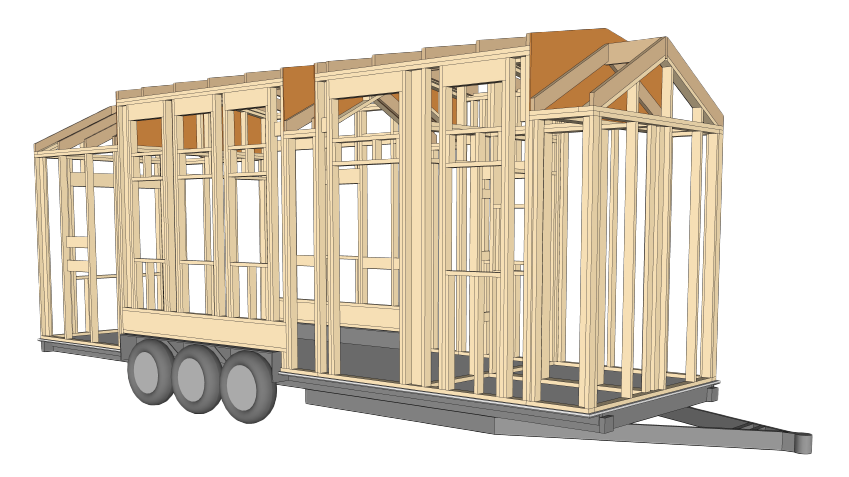Tiny house, tremendous impacts
Construction class takes on new project
April 22, 2022
As the school year approaches its end, South’s Geometry in Construction class is trying something new. Although the relatively new course has taken on functional projects in the past, such as building walls with Habitat for Humanity, this year the class took on a more involved venture: the full construction of a tiny home, Dan Leipert, Career and Technical Education Teacher, said.
Leipert drew up the blueprints for the tiny home in hopes that the project would offer a better learning experience for students than in previous years. He designed the tiny home as a recreational vehicle that should be fully functional for use after it is built. The tiny home will contain plumbing, electricity, heating, and air conditioning, he added.
“I have a master-of-architecture degree, so I drew up the plans,” Leipert said. “The students have been involved in terms of stylistic input, and they have started to build the walls.”
Student involvement is a crucial part of the construction process and although students are not as involved with the design process, Leipert said they do all the physical construction.
“[Students] are the people building this,” Leipert said. “I only help direct the construction, supervise, and make sure it’s up to a certain quality, but the students are the ones that are cutting the boards, driving the nails, and reading the plans that I have created.”
Sophomore Ameen Saleemi, a Geometry in Construction student, found the class to be a hands-on way to learn geometry, as opposed to the traditional class. Saleemi and his peers spend most of their classes working independently, hammering nails, and sawing wood. The students in Saleemi’s group divide their work up based on which students are best at specific skills and, although the project is still a ways from being finished, he is enjoying the journey so far.
Math Teacher Brian Schmalzer is excited to see how this tiny home will help his students grow, and he said that it has been rewarding to watch them take on a more difficult project. This project requires very close attention to details, however, Schmalzer explained that this is a welcome challenge.
“This project allowed us to mix [all parts of the construction process] which we hadn’t been able to offer in this program, to create these tiny homes, and then auction [the homes] off,” Schmalzer said. “The goal [is] to auction them off to the community and keep paying for the program.”
Although this project requires more responsibility, time, and resources, both Leipert and Schmalzer agree that it is well worth it. Aside from the overall teamwork and pride that Schmalzer hopes students take away from this project, he is most excited to help students see their math come alive through their handiwork.
“It’s the perfect project to teach a plethora of construction skills while still providing opportunities to integrate the geometry,” Leipert said. “It’s what the course is all about: teaching the hands-on skills and how they relate to the geometric principles.”



